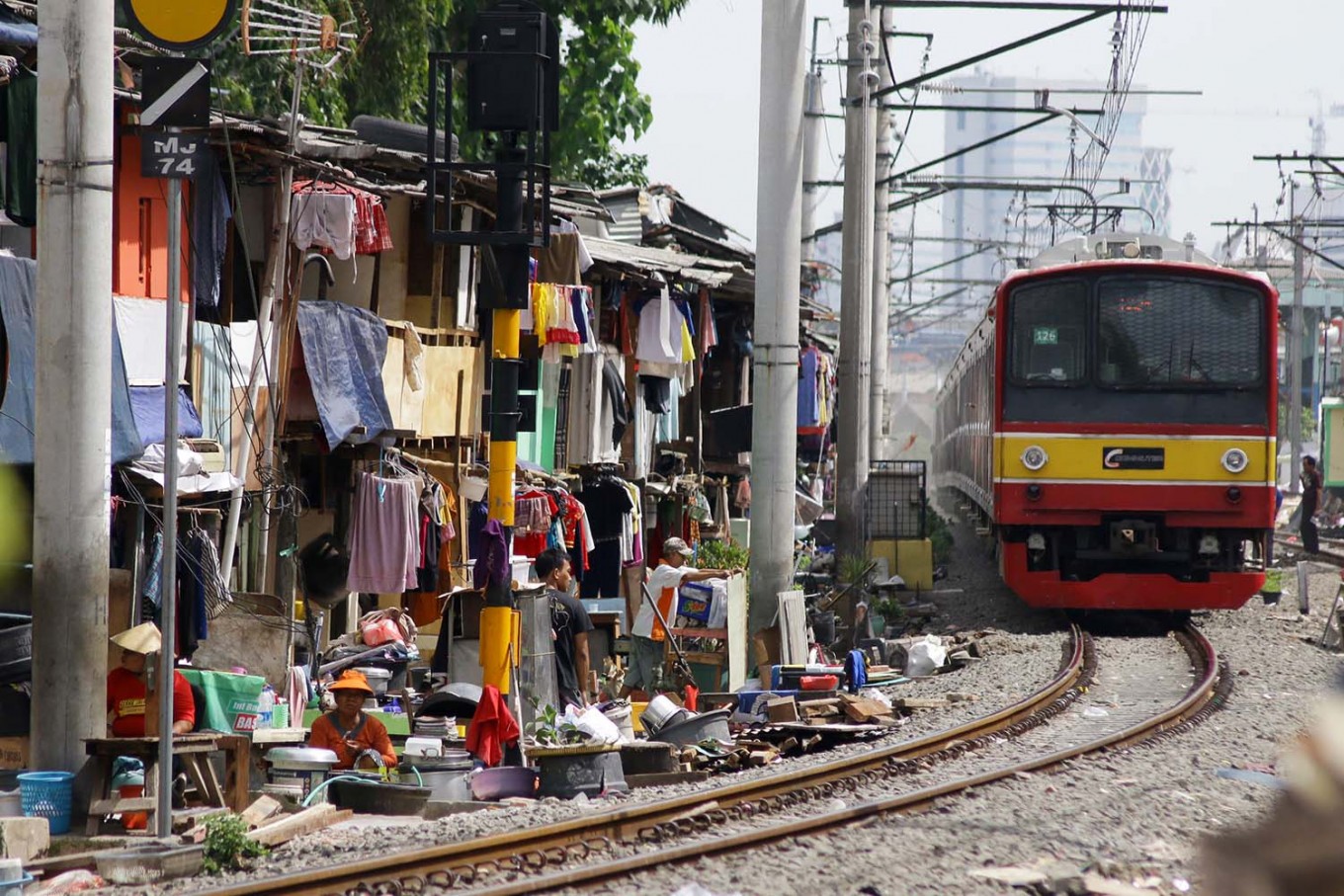Popular Reads
Top Results
Can't find what you're looking for?
View all search resultsPopular Reads
Top Results
Can't find what you're looking for?
View all search resultsSlums remain a fact of life in Jakarta, ministry finds
The government along with the World Bank has determined that 118 out of 267 subdistricts in Jakarta have slums.
Change text size
Gift Premium Articles
to Anyone
Roughly half of Jakarta comprises slums, according to a statement from the government.
“This is the fact of slums in Jakarta. We along with the World Bank have determined that […] 118 out of 267 subdistricts have slums,” Agrarian and Spatial Planning Ministry and National Land Agency land consolidation director Doni Janarto Widiantono said on Monday, kompas.com reported.
He said even though Jakarta had a lot of skyscrapers, land use distribution in the city was unequal and there were a lot of settlements on unowned plots of land.
“This condition continues on unowned plots, such as those near rivers. That's where 50 percent of slums are located,” Doni said.
He said the ministry had recorded that 39 percent of slums were located in North Jakarta, 28 percent in West Jakarta, 19 percent in South Jakarta, 12 percent in East Jakarta, 11 percent in Central Jakarta and 1 percent in Thousand Islands Regency.
He added there were various ways to organize land usage in residential areas without eviction.
“We will organize residential areas thematically, so it will not be a one-size-fits-all policy and we have to look at each problem [of the area],” Doni said.
On Monday, Jakarta Governor Anies Baswedan launched the agrarian reform task force with Gubernatorial Decree No. 574/2019.
The task force, headed by the governor himself, is tasked with supplying available land plots, organizing the city’s assets and access, and mediating agrarian conflicts.
In January, Vice President Jusuf Kalla and the governor noted the gap between the city’s urban and suburban areas. Kalla commented that the main thoroughfare of Jl. MH Thamrin in Central Jakarta looked like Singapore while areas in Tanjung Priok, North Jakarta, looked like Bangladesh.
Anies acknowledged the disparity saying that it showed how the city administration had previously been unable to properly arrange spatial planning. (ami)










